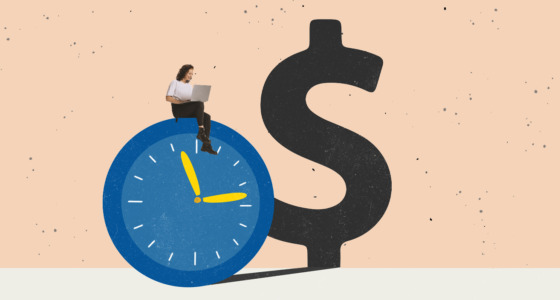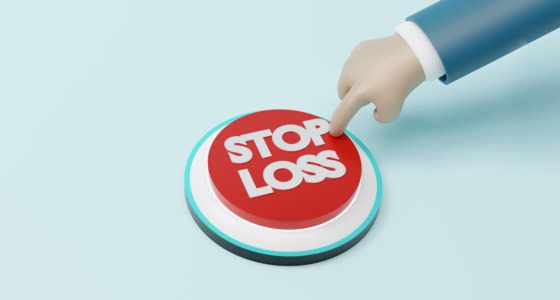

If you think professional traders use complicated strategies that have to be learned over the years, it’s not true. The most effective methods are the most straightforward ones. Keep reading to learn five strategies that can be easily implemented into your trading plan.
To evaluate the effectiveness of a strategy, traders use a win rate. They determine the percentage of the winning rate vs. failing rate. A figure of 50% or above stands for an effective strategy.
1. Trendlines (any timeframe)
You may be confused seeing this method on the list of pro strategies, but it’s one of the easiest and most effective methods that even professional traders use.
Step 1: Determine the trend.
There are three trend types — uptrend (bullish), downtrend (bearish), and sideways. The bullish trend occurs when the price forms higher highs and higher lows, the bearish trend is when the price forms lower lows and lower highs, and the sideways trend happens when the market corrects so that highs and lows are at almost the same levels.
Step 2: Draw lines through highs and lows.
They will serve as support and resistance levels. Set a buy order at the resistance level or a sell order at the support level.
Step 3: Set a take-profit order.
It should be at the support level in a short trade or at the resistance level in a long trade.
Step 4: Place a stop-loss order.
Although the price often rebounds exactly from support and resistance levels, there can be a case when it will break out but return. It’s a so-called fakeout.
Your goal is to determine the level of volatility and set a stop-loss order so that you don’t exit the trade early with losses. Examine how far the price went beyond support and resistance levels before or use the risk/reward ratio to determine the size of the stop-loss level based on the profit target.
2. Breakouts (any timeframe)
This strategy is also based on support and resistance levels.
Step 1: Draw support and resistance levels.
After you draw them, check how often the price rebounded. The more it touches support and resistance boundaries, the sooner a breakout occurs.
Step 2: Check the volume indicator
The volume indicator helps to identify a fakeout. If it grows, buyers/sellers may have enough strength to drive the price further.
Step 3: Determine a take-profit target
Find the closest resistance (a long trade) or support (a short trade) and use it as a target.
Step 4: Set a stop-loss order.
The stop boundary should be placed on the level the price broke beyond. If the price returns, it will mean a fakeout.
3. Chart patterns (any timeframe)
The chart pattern strategy involves the breakout method.
Step 1: Find a chart pattern.
There are numerous chart patterns, all based on the breakout of a certain level. For instance, if you determine an inverse Head-and-Shoulders pattern, the price is supposed to break above the neckline (the line drawn through two picks formed after the first shoulder and before the second one; orange circles).
Step 2: Set a take-profit order.
The order should equal the distance between the pattern’s head and neckline (orange line). Even if you use another pattern, the largest distance between its points will be a take-profit target.
Step 3: Set a stop-loss order.
As chart patterns have a high level of accuracy, you can place the stop-loss target exactly on the level of a breakout. If the price returns, it will confirm that the pattern failed.

4. News trading (low timeframes)
There are two scenarios — you can trade ahead of the news or immediately after it. The common news that can impact a price direction is economic releases, political events, and a company’s internal news (stocks, bonds, or cryptocurrencies).
If you decide to trade ahead of the news, you should examine forecasts on the event’s outcome and its potential impact on the asset. If it’s positive, buy. If it’s negative, sell. But it’s vital to close the trade before the news is out because the market reaction is unpredictable.
If you trade on the event’s outcome, open a position soon after it’s out. You should determine beforehand what impact it will have on the asset.
When trading on the news, it’s hard to identify take-profit and stop-loss levels, as the strategy implies high volatility.
5. Pair trading (any timeframe)
This strategy is based on a positive correlation between two assets. Your goal is to identify the assets with the highest level of correlation and check how they react to a particular event. If one of them rises significantly, and another doesn’t react the same way, you need to sell the one with a large increase and buy the one with a smaller increase. A take-profit target can be set on the closest resistance and support levels. A stop-loss order can be calculated using the risk-reward ratio.
Takeaway
There are numerous strategies you can use to open effective trades. Choose the one that will match the asset you trade, the timeframe you use, and the period you plan to hold the position.









